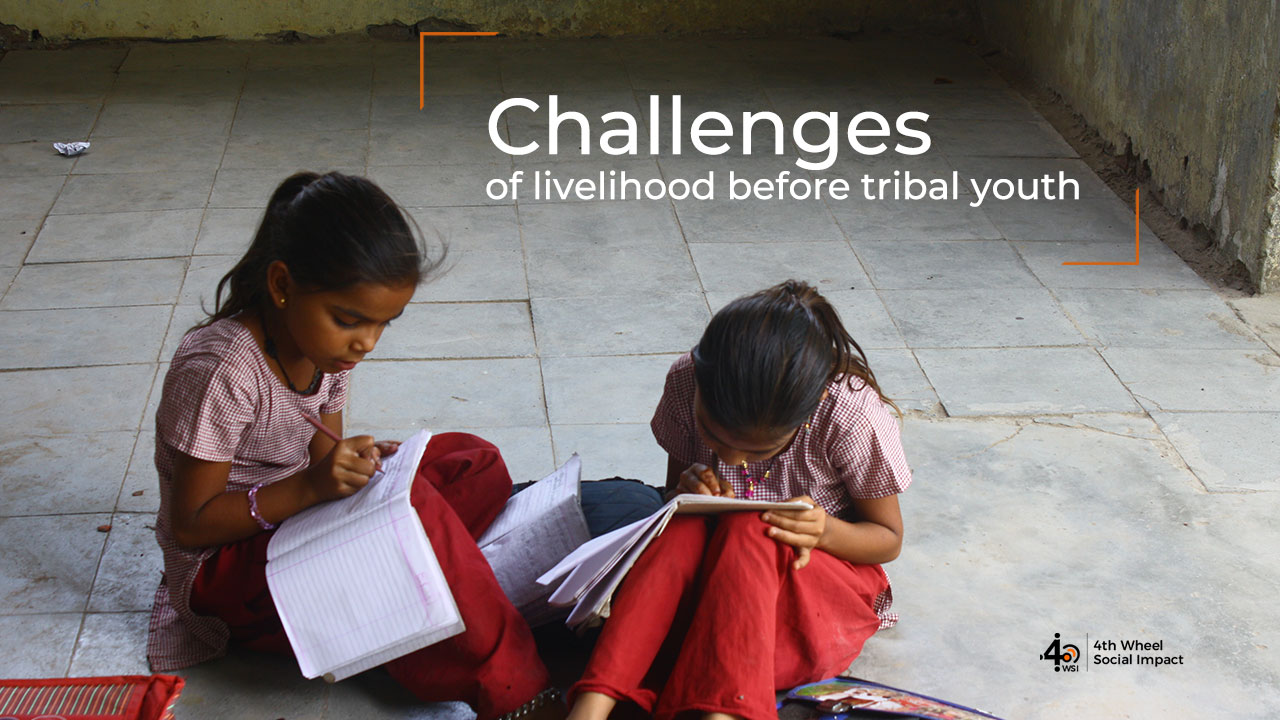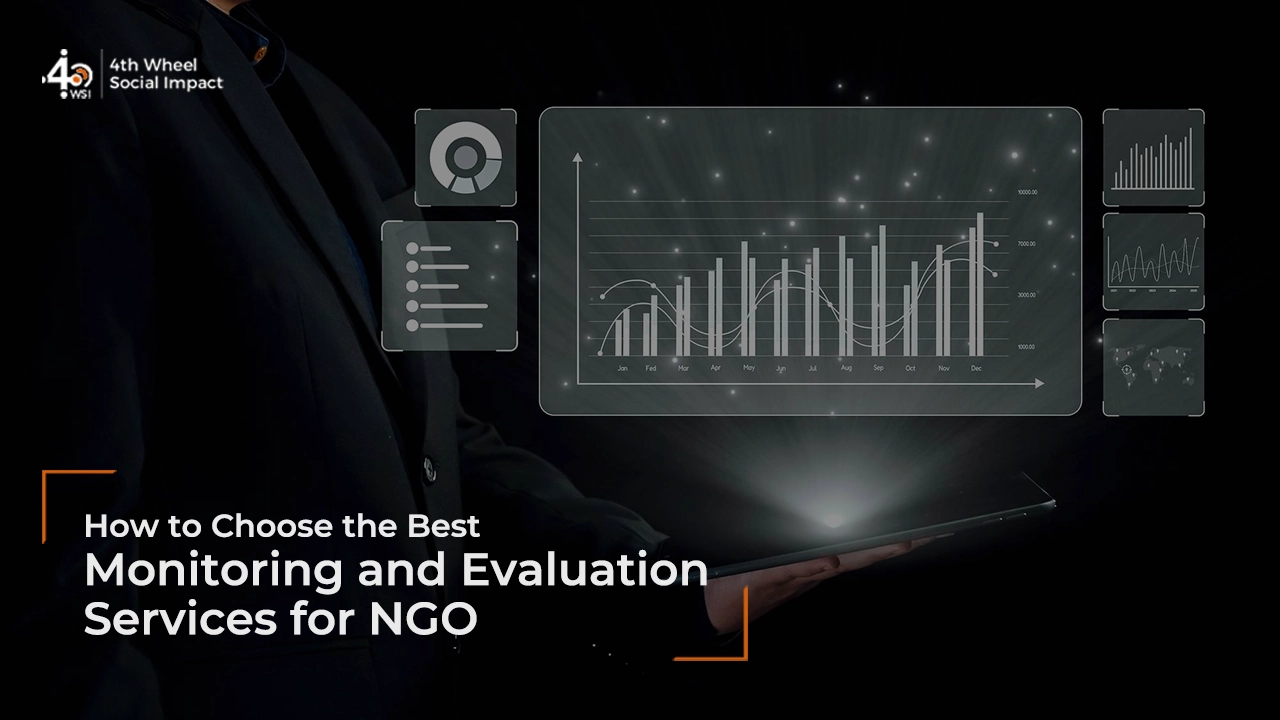Rooted in culture and community, the tribal culture is one of the most prominent, long-standing pillars of Gujarat. From Bhil to Dang, the tribes of Gujarat have carved out unique identities and progressed rapidly over time in the past few years.
Despite its widespread presence, with the new-age challenges that have risen in the past decade, the tribal youth has been facing complex issues. Via social impact evaluation studies, it was found that poverty, lack of access to education and opportunities, and unemployment have caused the tribal population to seek succor in subpar opportunities in order to sustain their livelihood.
What is the Tribal Culture in Gujarat?
The westernmost state of India, Gujarat, has a long tribal belt in its remote east and southern regions. These tribal villages have a mostly arid and low rainfall landscape and the mountains to the south are host to some of the largest tribal populations in the country.
One such region with a significant Adivasi population is the Valsad-Dang region. Located in the southeastern part of the state, this region falls in the rain-shadow area and is extremely dry throughout the year. This geography comes with its socio-economic challenges and the youth here struggle through them to find a place for themselves in the mainstream.
Through this blog, we have attempted to summarise those challenges based on the experiences, observations, and M&E reports we’ve compiled during our visits to these villages.
What Are the Tribal Issues in Gujarat?
Upon a deeper investigation of social impact assessments, Gujarat’s tribal communities face a spectrum of challenges that are often unseen in urban settings. These challenges include:
Cultural Disintegration: Rapid industrialization and urbanization are threatening the unique cultural heritage of Gujarat’s tribal populations. This trend has led to a loss of traditional crafts, rituals, and languages.
Land Disputes: Many tribal groups are engaged in long-standing conflicts over land rights. The common issues surround forest land encroachment and lack of legal documentation to prove land ownership.
Healthcare Accessibility: There is a significant lack of healthcare facilities in tribal areas coupled with low awareness about health issues. This leads to higher incidences of malnutrition and non-communicable diseases.
Political Marginalization: Tribal communities in Gujarat often find themselves underrepresented in political processes. This results in inadequate allocation of resources for their development.
Education Quality and Reach: Beyond low literacy rates, the quality of education in tribal schools is poor, with many lacking basic infrastructure and qualified teachers. The lack of a well-structured knowledge base and inefficient capacity development hinder the educational prospects of tribal children.
The Stark Reality of Education, Health, and Employment in Gujarat’s Tribal Communities
Gujarat has some of the lowest statistics when it comes to tribal communities’ health, education, and employment. Some of the major components that play a part in this dire situation of lack of social and financial inclusion are as under:
Water Scarcity: The constant scarcity of water makes it almost impossible for tribal families to engage in commercial farming or any such employment.
Isolation: The regions that the tribal communities live in are remote, and there are but a few transportation facilities that could help them reach nearby cities on a day-to-day basis.
Low Literacy: The low literacy rate also hampers the employability of the tribal youth. This improper education leaves them with only local, informal employment, which is mostly working as daily wage workers in other farms, on construction sites, and in sugarcane or brick line factories. The wages in this nature of employment are below the established criteria for minimum wages.
Urban Migration of Tribal Youth and Its Challenges
If the tribal youth isn’t employed informally then the other option for them is to get employed in the textile garments or Chinese phone-making industries which have recently grown as Gujarat’s major employers.
These industries give relatively better pay and give some benefits of formal sector employment. The tribal youth migrate to the city, pay high rent, get used to the ‘urban language’, and work for 10 or more hours in an enclosed building.
However, considering the expenses at the city level, the salaries in these jobs rarely leave any space for savings and hardly help these workers and their families survive the month. This constant struggle and insecurity of livelihood also creates another barrier when it comes to inclusive urbanization and uplifting the way of life of tribal communities.
Role of Tribal Development in Emerging Solutions and Their Positive Impact
With time, there has been a push towards equalizing opportunities between the urban and tribal youth and giving the tribal communities a solid, stable foundation for growth. There are a few organizations and government programs that are training youth in certain areas as per the needs of the prominent industries in the region and providing them with jobs in these companies post-training.
The most notable of these efforts include:
Skill Development Programs: Several NGOs and government initiatives focus on vocational training tailored to local and urban job markets. These programs equip the tribal youth with the necessary skills for employment in sectors like textiles, manufacturing, and services which increase their employability.
Educational Outreach: To improve literacy rates, nonprofits and educational institutions are setting up mobile schools and learning centers in remote areas. These efforts encompass scholarship programs for higher education and include special initiatives targeting tribal girls.
Healthcare Access: Mobile health clinics and telemedicine services are being deployed to provide regular health check-ups and medical consultations. These services are crucial for remote tribal regions where traditional healthcare facilities are sparse.
Water Conservation Projects: Organizations are introducing water conservation techniques and irrigation technologies, such as drip irrigation and rainwater harvesting, to combat water scarcity and improve agricultural productivity in tribal areas.
Economic Development Initiatives: Microfinance institutions and cooperative societies are helping tribal communities start small businesses and cooperatives to promote self-sufficiency and reduce dependency on uncertain wage labor.
Cultural Preservation Programs: Some organizations are working to preserve and promote tribal arts, crafts, and cultural heritage through festivals and markets that also serve as platforms for income generation.
Infrastructure Improvement: Partnerships between local governments and private organizations are focusing on improving infrastructure like roads, transport systems, and utilities to better connect tribal areas with urban centers, facilitating easier access to markets and services.
Conclusion
The tribal culture is an indelible part of Gujarat’s culture as a whole. The development of such a significant section of the state is detrimental to the progress of the state as a whole,
Addressing the multifaceted challenges faced by Gujarat’s tribal communities is an undoubtedly complex process. However, through concerted efforts by various organizations and the government, significant strides are being made towards not only alleviating immediate hardships but also building a sustainable foundation for future generations.
As we continue to push for comprehensive and inclusive growth, the resilience and potential of the tribal youth in regions like Valsad-Dang are key to transforming challenges into opportunities. With continued support and innovative solutions, the tribal communities of Gujarat can be integrated into the mainstream economic and social fabric of India where they can thrive.
To dive deeper into 4th Wheel’s contributions to this essential, long-term goal, take a look at our social impact programs today!
This article is written by Roma Makati, Research Associate at 4th Wheel Social Impact.




